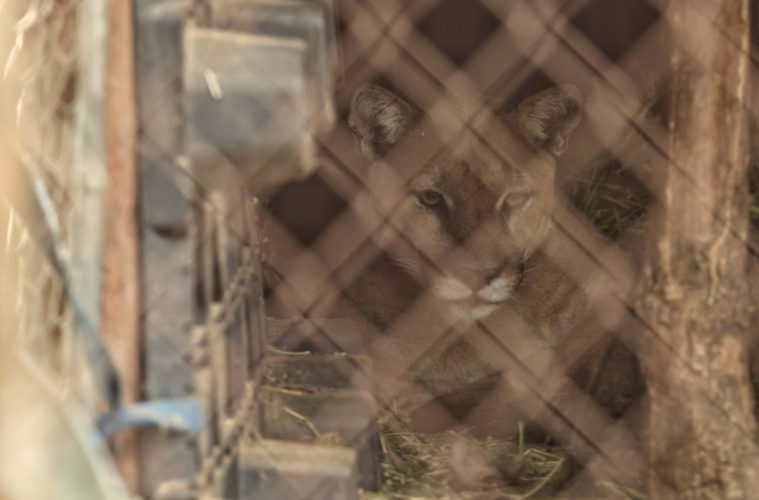On Thursday, May 20, an Orange County mountain lion, locally known as El Cobre, was found trapped inside a livestock enclosure near Irvine – for the second time in two weeks. After El Cobre’s second capture and release within a month, the 120-pound wild cat was fitted with a tracking collar.

Local mountain lion, “El Cobre” sits inside a William Canyon animal enclosure on Thursday May, 20. (Mark Girardeau/Orange County Outdoors)
El Cobre, a name that can be credited to wildlife photographer Mark Girardeau, who runs the @OrangeCountyOutdoors Instagram account, returned to the same Williams Canyon enclosure he was found inside on May 4 and is now the first new mountain lion in Orange County to be fitted with a tracking collar, giving local researchers hope for the Orange County mountain lion’s genetically impacted future.
Dr. Winston Vickers, Director of the Mountain Lion Project at UC Davis, told Irvine Weekly that he personally fitted El Cobre with the tracking collar on Thursday, May 20.
Due to the lack of official markings, Vickers said this was the first time the animal had been captured and tagged.
“We had never captured him before,” he said. “He’s somewhere in his middle years, he’s mature.”
Vickers, who recently spoke with Irvine Weekly about his extensive research on Orange County mountain lions, said El Cobre was an early, unexpected addition to the collaring his team planned to start in the fall, adding that there has not been an Orange County mountain lion fitted with a tracking collar since 2016.
“He’s number one for now — he was an unexpected addition, we weren’t looking to start collaring yet,” Vickers said in a phone interview with Irvine Weekly, while en-route to El Cobre’s relocation on May 20.
“We didn’t want to keep collaring and capturing animals for no good reason. We just resumed in 2020, for a specific project in San Diego County, and then now, we intend to do some collaring in Orange County in the fall.”
In a recent interview, Vickers explained that in-breeding, a high mortality rate and the lack of pathways to different regions of Southern California has led to a lack of genetic variation within the mountain lion populations living within the Santa Ana Mountains.
El Cobre has recently gained attention in the Williams Canyon area after rumors started circulating that a rogue mountain lion was hunting for sport, not food. However, researchers, like Vickers and wildlife biologists from the California Department of Fish and Wildlife dispute those theories.
After being relocated from Williams Canyon, Vickers and his team, along with the CDFW, will be sharing the data on El Cobre via his tracking collar. Vickers admits he had to borrow El Cobre’s collar.
“It’ll be jointly shared between us and CDFW,” he said. “It takes months when you’re planning to do a collaring session. Just yesterday, I was ordering collars — anticipating I didn’t need them until the fall. I had a couple of collars on hand, just in case, and you know, sure enough.”
Advertising disclosure: We may receive compensation for some of the links in our stories. Thank you for supporting Irvine Weekly and our advertisers.

